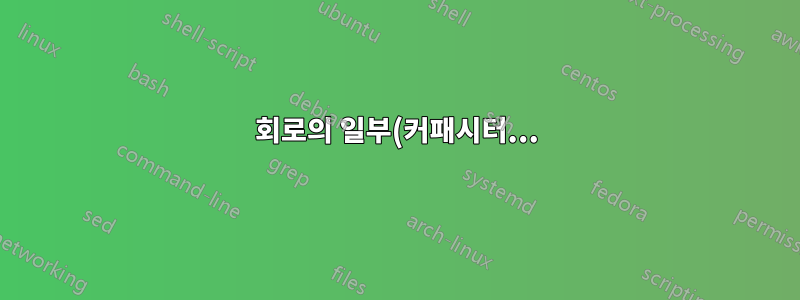%EB%A5%BC%20%EC%84%9C%EB%A1%9C%20%EC%83%81%EB%8C%80%EC%A0%81%EC%9C%BC%EB%A1%9C%20%EB%B0%B0%EC%B9%98%ED%95%A9%EB%8B%88%EB%8B%A4.%20%ED%9A%8C%EB%A1%9C%20%EB%B6%80%ED%92%88%EC%9D%98%20%EC%9D%B4%EB%A6%84%EC%9D%84%20%EC%82%AC%EC%9A%A9%ED%95%98%EC%97%AC%20%22%EC%BB%A8%ED%8A%B8%EB%A1%A4%22%EC%9D%84%20%ED%86%B5%ED%95%B4%20%EB%A9%94%EC%8B%9C%20%ED%99%94%EC%82%B4%ED%91%9C%EB%A5%BC%20%22%EC%A7%81%EA%B4%80%EC%A0%81%EC%9C%BC%EB%A1%9C%22%20%EB%B0%B0%EC%B9%98.png)
이 질문은 계속 내또 다른. 내 평판 때문에 답변에 의견을 추가할 수 없습니다. 그래서 나는 감사할 기회를 이용한다존 코밀로내 첫 질문에 대한 그의 대답에 대해. 또한 잘못된 영어로 인해 죄송합니다.
질문에:
회로의 경우 다음 구문을 사용합니다 circuitikz.
\begin{circuitikz}
\draw
(0,0) to [V = $U$] (0,3)
to [short, i = $I$, -*] (3,3) -- (6,3)
to [R = $R_2$, v = $U_2$, i = $I_2$] (6,0) -- (0,0)
(3,3) to [R = $R_1$, v = $U_1$, i = $I_1$, -*] (3,0);
\end{circuitikz}
이는 매우 쉽고 직관적입니다. 그러나 회로에 메시 화살표를 추가하려면 다음을 사용합니다(위 코드에 추가로, 예를 들어 메시 하나).
\draw
%
% mesh one (detailed explanation of the implementation)
%
[<-,% direction of the arrow
> = triangle 45,% kind of the arrow end
path picture =% allows ''to paint a picture'' inside of an other ''picture''
{\node[anchor = center]% position of the inner ''picture''
at (path picture bounding box.center)% bordering rectangle,
% centered inside the arrow (arrow is the outer ''picture'')
{$M_1$};}]% text of the inner ''picture''
(1.75,1)% coordinates of the arrow end
arc% arc-shaped arrow
(-60:% angle of the arrow start
170:% angle of the arrow end
.5);% radius of the arc
두 코드 조각의 결과를 보려면 위의 링크(내 초기 질문)를 참조하세요.
"단지" 하나의 화살표에 대한 이 정도의 코드는 나에게는 다소 복잡하고 직관적이지 않은 것 같습니다.
내가 원하는 것:
1.PGF51페이지 매뉴얼(하위 섹션 3.8)의 "Petri-Net" 예와 같이 회로의 일부(이름이 있는 노드)를 서로 상대적으로 배치합니다 .
구문 과 결합됩니다 circuitikz(첫 번째 코드 예제 참조).
2.John Kormylo가 내 초기 질문에 대한 답변에서 했던 것처럼 회로 부품의 이름을 사용하여 매크로 controls(설명서 748페이지 )를 사용하여 메시 화살표를 직관적으로 배치합니다.PGF
\node (M 3) [below] at (0,0) {\phantom{$M_3$}};% reserving space for M 3 under the circuit
\draw
[->, > = triangle 45] (current bounding box.east) .. controls
(current bounding box.south east) ..
(M 3.south) node[above, pos = .95] {$M_3$};% see below
% above: location of the inscription ''M_3'' relative to the arrow end
% pos=: location of the inscription ''M_3'' on the ''x''-axis (arrow beginning is zero,
% arrow end is one)
이것이 가능한가? 그렇다면 어떻게 해야 합니까? 제 의도를 이해해주시길 바랍니다.
귀하의 답변과 도움에 미리 감사드립니다!
답변1
호의 중심에 노드를 배치하는 대신 노드 주위에 호를 배치했습니다. 동일한 결과, 더 적은 키 입력. 동일한 옵션을 계속해서 반복하지 않는 방법도 여러 가지가 있습니다. 변경 사항은 범위 기간 동안에만 지속되므로 범위를 사용했습니다.
대부분의 단순화는 주석을 제거했기 때문입니다.
\documentclass{scrartcl}
\usepackage[T1]{fontenc}
\usepackage[utf8]{inputenx}
\usepackage{amsmath}
\usepackage[european]{circuitikz}
\usepackage{showframe}
\begin{document}
\noindent
\begin{minipage}[t]{.5\linewidth}
\begin{circuitikz}[baseline=(current bounding box.north)]
%
% circuit
%
\draw
(0,0) to [V = $U$] (0,3)
to [short, i = $I$, -*] (3,3) -- (6,3)
to [R = $R_2$, v = $U_2$, i = $I_2$] (6,0) -- (0,0)
(3,3) to [R = $R_1$, v = $U_1$, i = $I_1$, -*] (3,0);
%
% mesh arrows
%
\begin{scope}[>=triangle 45]
\draw[<-] (1.5,1.5) node{$M_1$} +(.25,-.433) arc(-60:170:.5);
\draw[<-] (4.5,1.5) node{$M_2$} +(.25,-.433) arc(-60:170:.5);
\node (mesh3) [below] at (0,0) {\phantom{$M_3$}};% reserve space below circuit for M_3
\draw[->, thick] (current bounding box.east)% not the only way, just easy
.. controls (current bounding box.south east) ..
(mesh3.south) node[above,pos=.9] {$M_3$};
\end{scope}
\end{circuitikz}
\end{minipage}
\hfill
\begin{minipage}[t]{.45\linewidth}
%
% equations for mesh and knot
%
\begin{align*}
&K : \quad I = I_1 + I_2\\
&M_1: \quad -U = -U_1\Leftrightarrow U = U_1 = R_1I_1\\
&M_2: \quad U_1 = -U_2\\
&M_3: \quad -U = -U_2\Leftrightarrow U = U_2 = R_2I_2
\end{align*}
\end{minipage}
\end{document}



